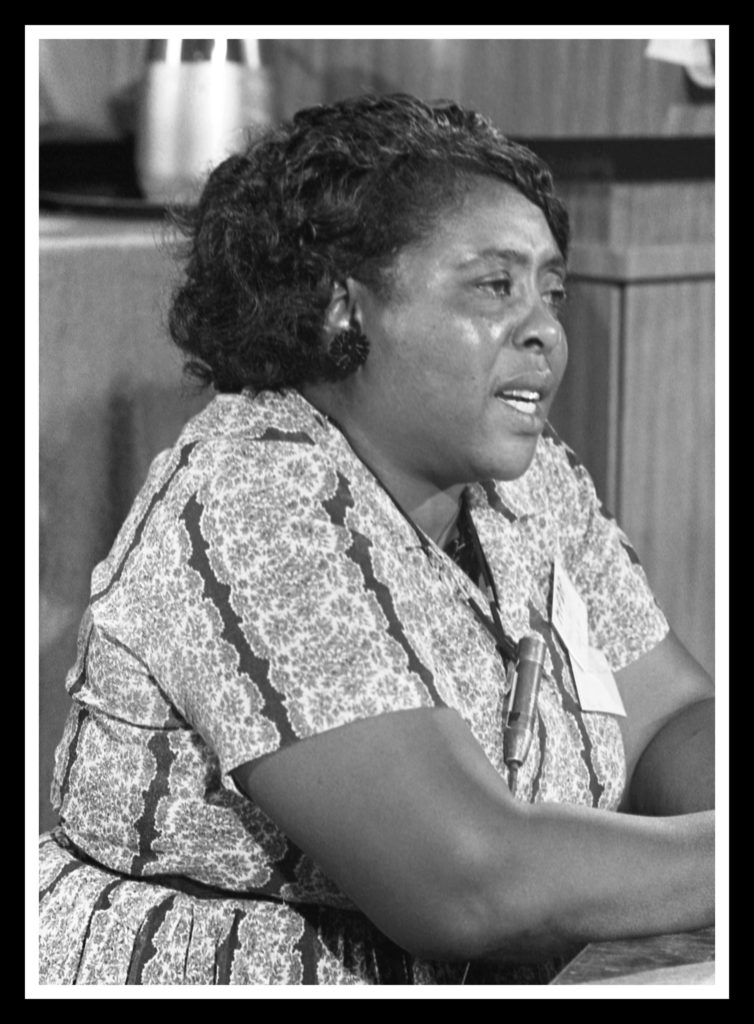
Fannie giving her testimony in 1964 at the Democratic National Convention…despite the president’s attempts to silence her.
Fannie Lou Hamer was called the “Spirit of the Civil Rights Movement” and, sometimes, “The Voice of the Civil Rights Movement” and both are very appropriate.
She was born Fannie Lou Townsend on October 6, 1917, into a large family of sharecroppers in Mississippi. When she was in her mid-20s, Fannie married Perry “Pap” Hamer and moved her life from the plantation she was raised on, to the one next door. As only the second generation after slavery, Fannie’s life wasn’t very different than her mother’s…which was only slightly different than her mother’s. Treatment of Black Americans in Mississippi, and throughout the south, had not come very far in the previous fifty years, and Fannie was sick and tired of it.
After learning, well into her 40s, that registering to vote was something that she could do, she navigated all the hurdles that had been put in place to keep Black Mississippians from voting and decided that correcting these wrongs was to be her life’s work. She began by helping her community register to vote and worked with grassroots civil rights activism organizations. Then she got really busy: she became an organizer of similar groups as well as a new political party, the Mississippi Freedom Democratic Party, she ran for office, established a farm co-op for her community, and spoke to groups large and small all over the US in her powerful (and musical) way. There was a steep price to pay as she faced white supremacists and a society designed to keep Black voices silent at any cost. She was arrested, assaulted, and did her work knowing that there was a high chance of being subjected to violence every single day.
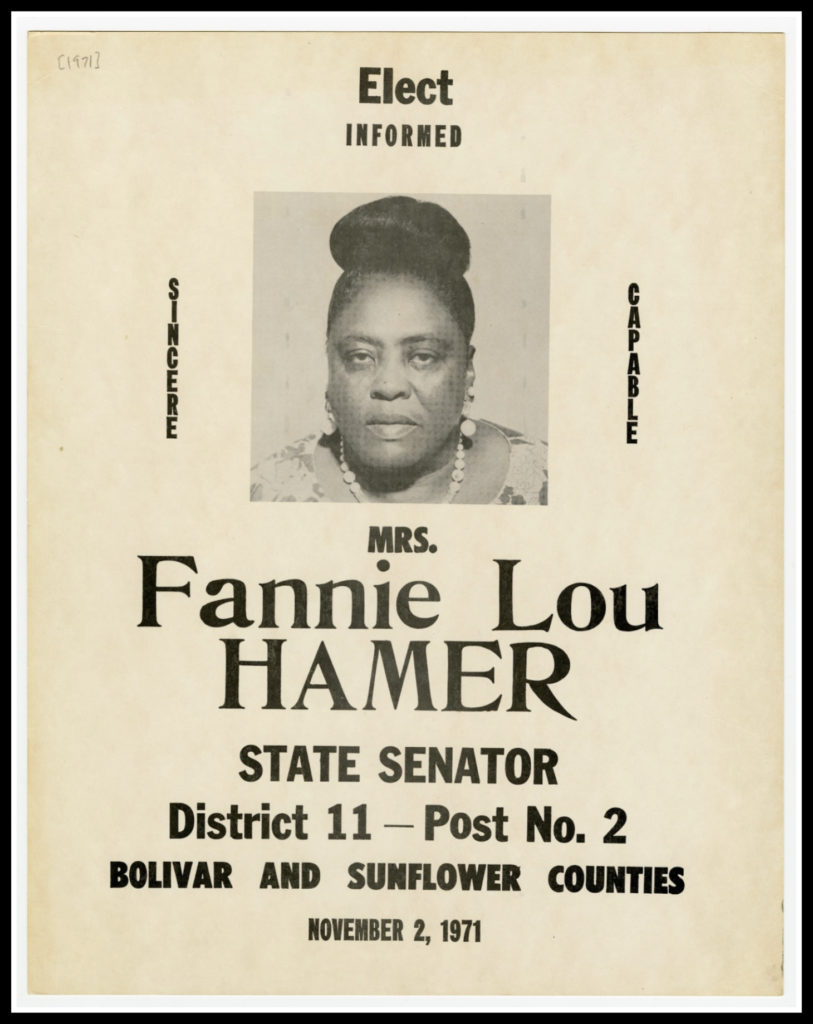
Fannie’s second run for elected office in 1971. Library of Congress
Fannie wasn’t shy, she didn’t always give the most politically correct statements, but she always spoke honestly and with a singular mission: racial equality. Her activist work lasted less than 15 years, but the lives she touched in that time, and the projects she was involved with would have taken others a lifetime and had a long…long-lasting impact.
After years of ups and downs, failures and successes, injuries and ill health, and a constant struggle to do what was right to bring awareness and change to the world about the treatment of Black people of the US, Fannie Lou Hamer died on March 14, 1977. She was 59 years old and is buried in her hometown of Ruleville, Mississippi.
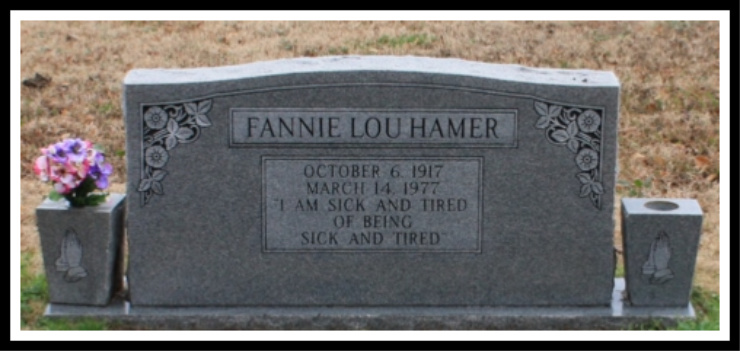
Fannie’s headstone bears the words of her most famous quote, the reason for her life’s work.
Time Travel with The History Chicks
Books!
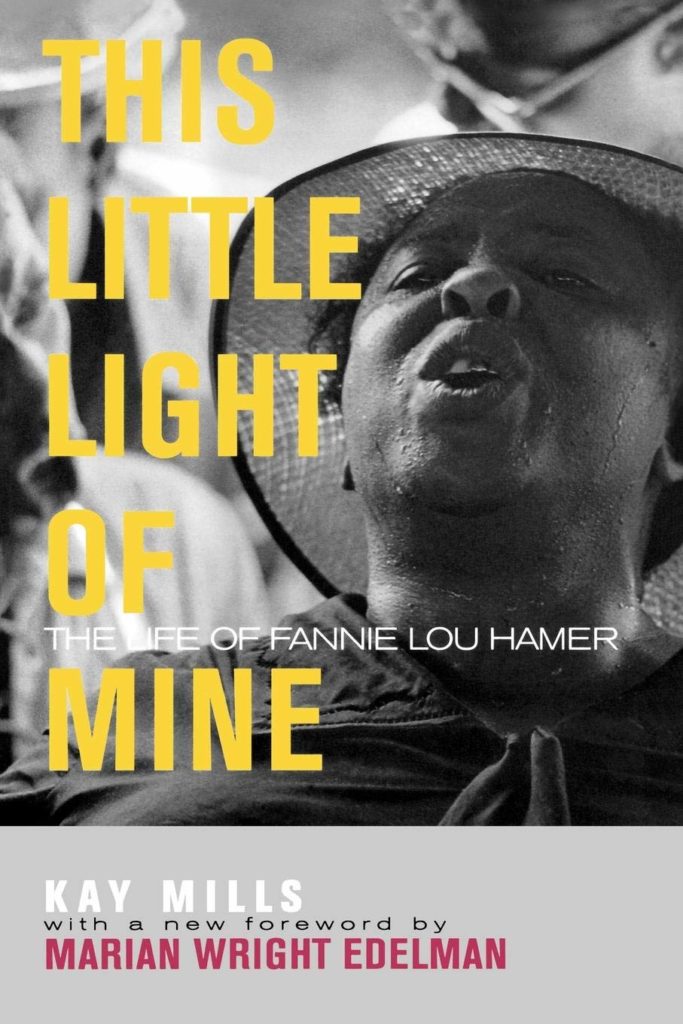
If you’re only going to read one, this is the one we recommend by Kay Mills
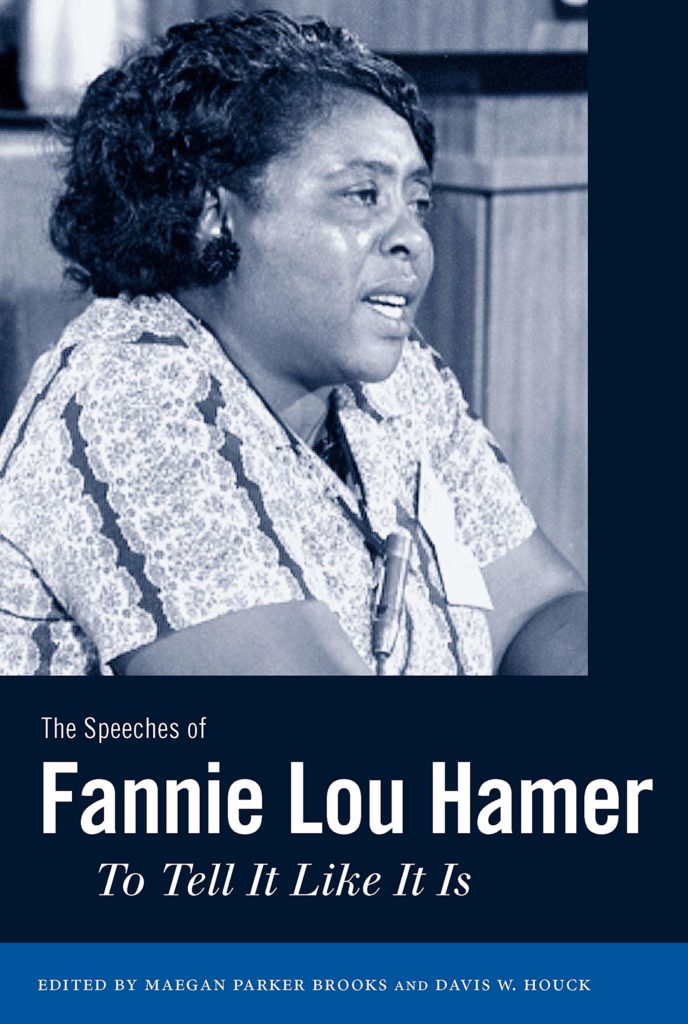
Maegan Parker Brooks has several books on Fannie we recommend
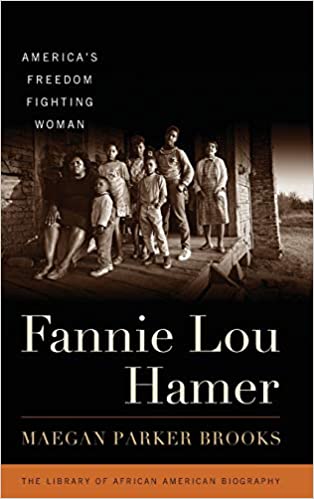
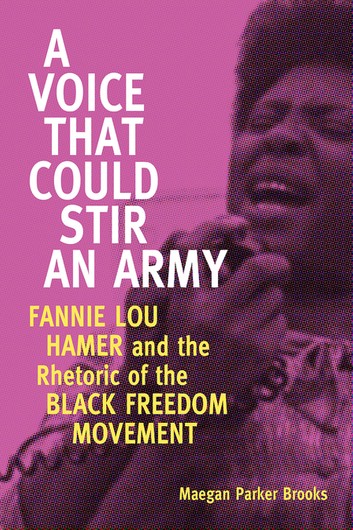
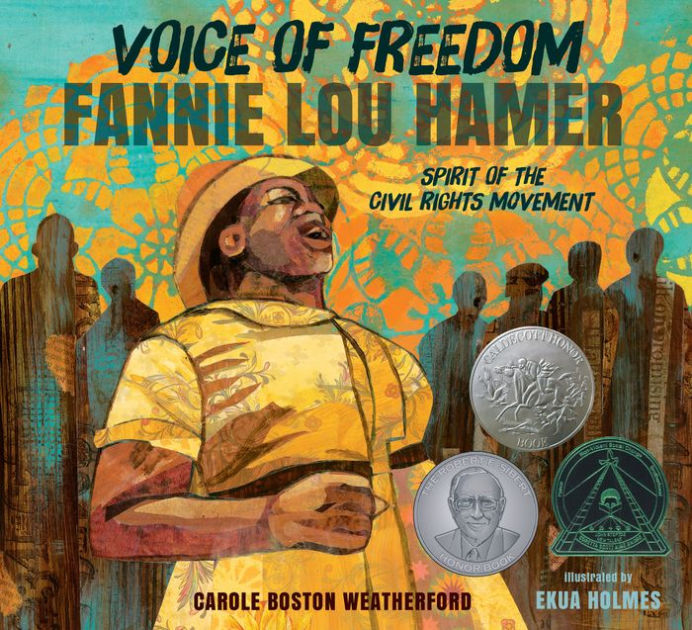
For kids. This one goes into Micah’s Library, by Carol Boston Weatherford, illustrated by Ekua Holmes
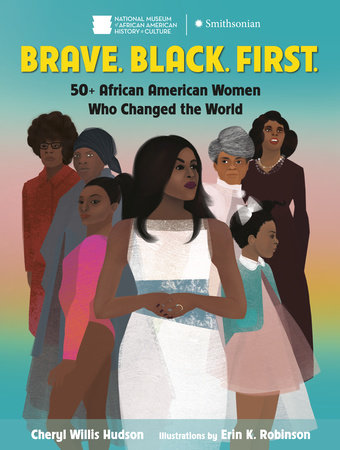
Middle grade and up. By Cheryl Hudson, illustrated by Erin K. Robinson
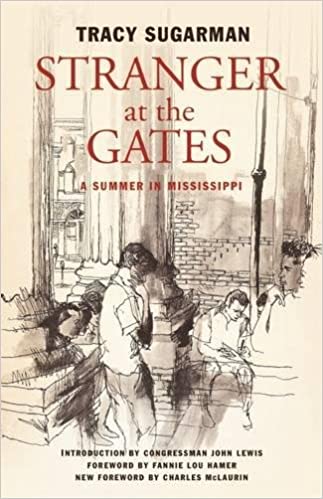
Fannie adjacent: Illustrated memoir on the Freedom Summer by Tracy Sugarman
This autobiography is online for easy reading To Praise Our Bridges: An Autobiography of Fannie Lou Hamer.
Web!
Fannie’s oral history is documented and just because Susan couldn’t figure out how to make the audio points work, doesn’t mean you can’t! User error is real!
The Attic website is a great place to tumble down some rabbit holes, maybe start with this piece about Fannie.
Hearing Fannie singing and giving speeches will give you goosebumps in the best way! FREEDOM SONGS and here’s another recording from NPR.
SNCC Digital Gateway will give you a lot of information about the work, and legacy, of this organization, as well as read Fannie’s…sorry, Mrs Fanny Lou Hamer’s biography.
We feel everyone needs to understand the importance of Emmitt Hill, and think this is a good article to start with from History dot com, Eight Years Between Emmitt Hill and Martin Luther King’s I Have a Dream.
The libretto from The Fannie Lou Hammer story: A Civil Rights Opera, and an overview of Fannie’s life from ENCYCLOPEDIA. COM.
The trailer for the upcoming movie, Fannie Lou Hamer’s America
and to follow along on the production, this article has a lot of information, From FINDYOURVOICE.COM
And, we know you were scrolling fast to find this: A transcript of an interview with Harry Belafonte (and if you are thinking “wwwhhy?”) then we know you haven’t listened yet.
The National Women’s Political Caucus is still a very active group, find out about their programs and upcoming candidates that they are supporting on their website!
The Bowery Boys NYC podcast has an episode on the Silent Parade of 1917, America’s first large scale civil rights protest, at the very least, go read their shownotes for it.
If you would like to tumble down a boll weevil hole, here’s a good starting point in this HISTORY NOW article.
Moving Pictures!
A documentary on Fannie from Mississippi Public Broadcasting:
Break songs: Cotton Fields by Mark Cook, Blind to Beauty by Ray Montford Group; End song: This Little Light of Mine by Merry Ellen Kirk
All used with permission from IlicenseMusic


